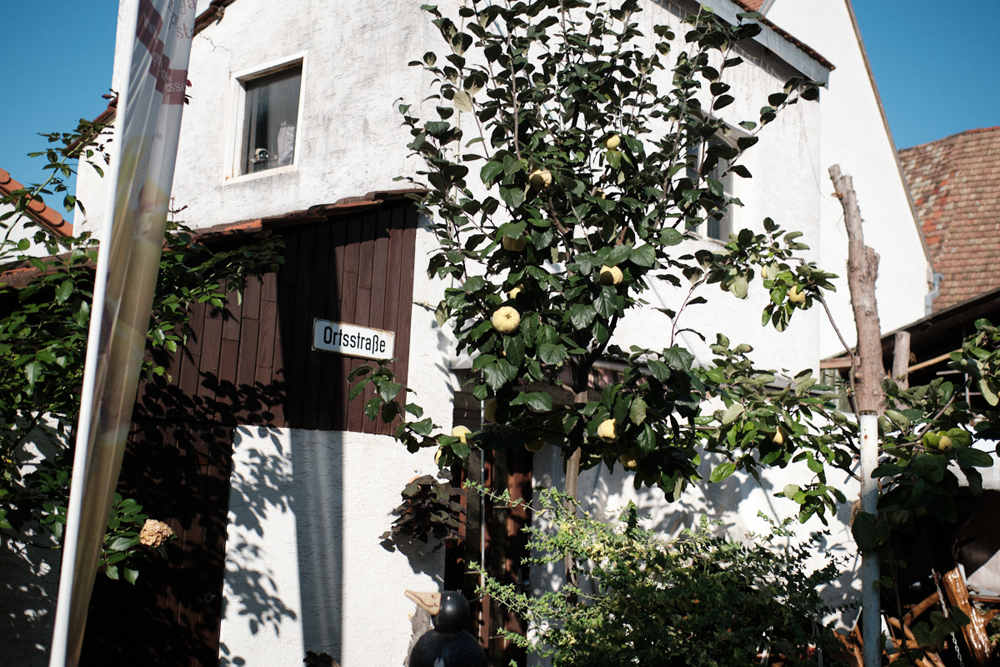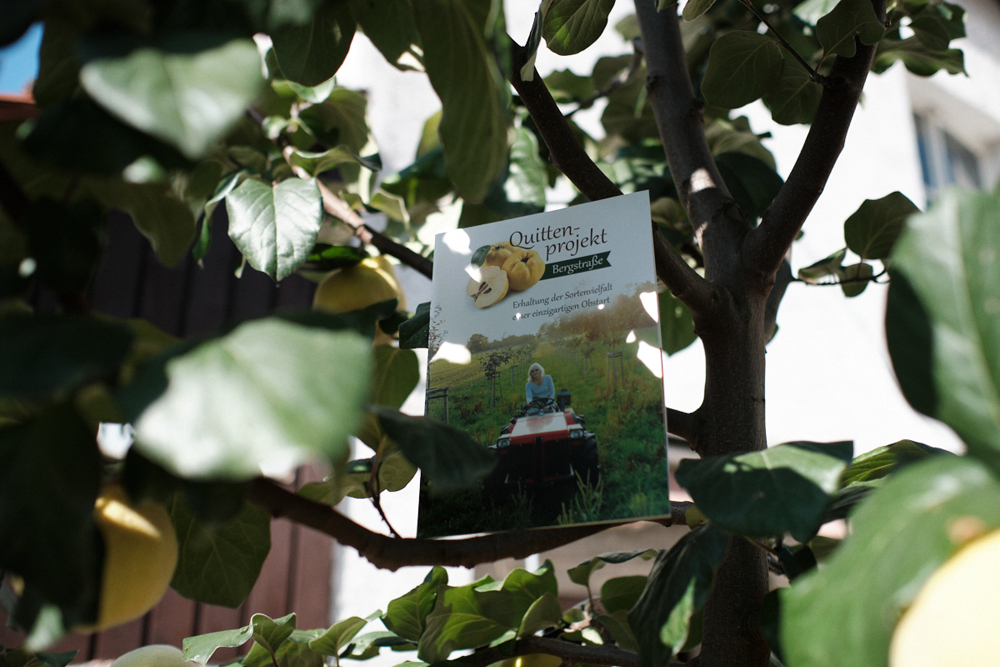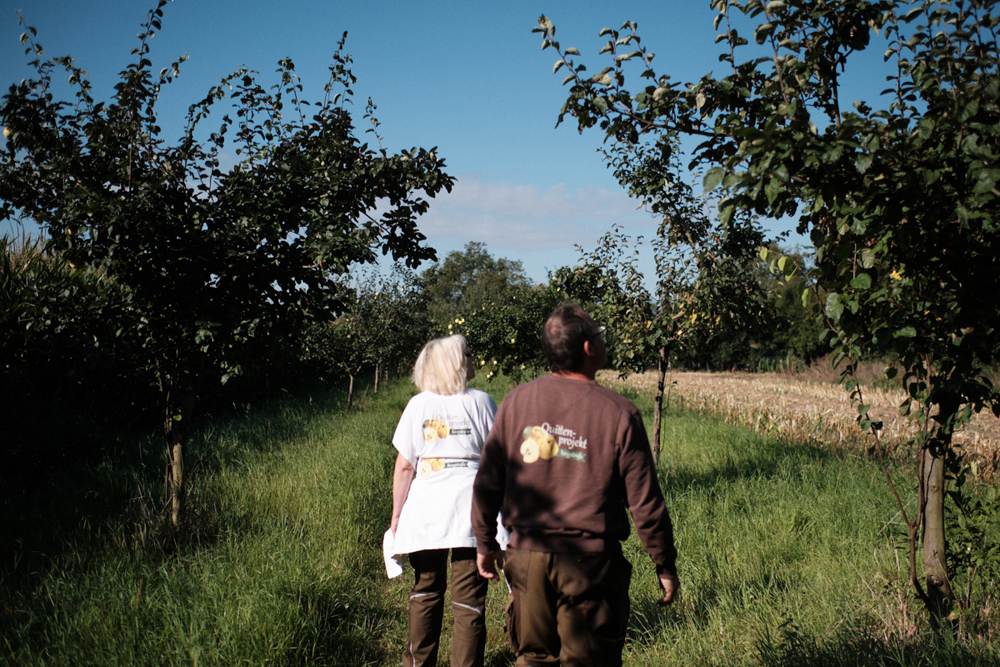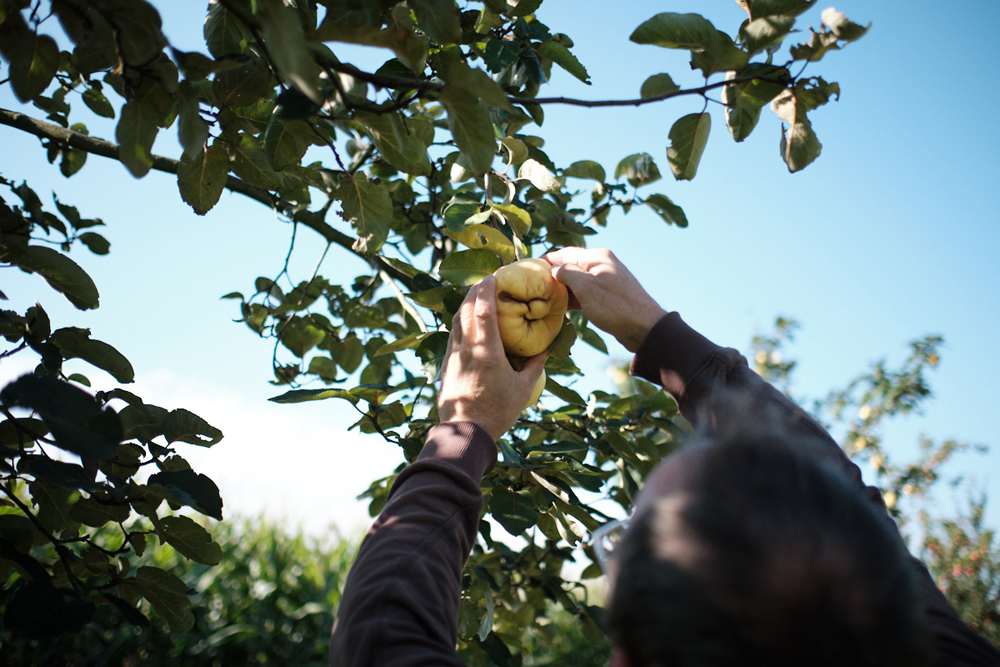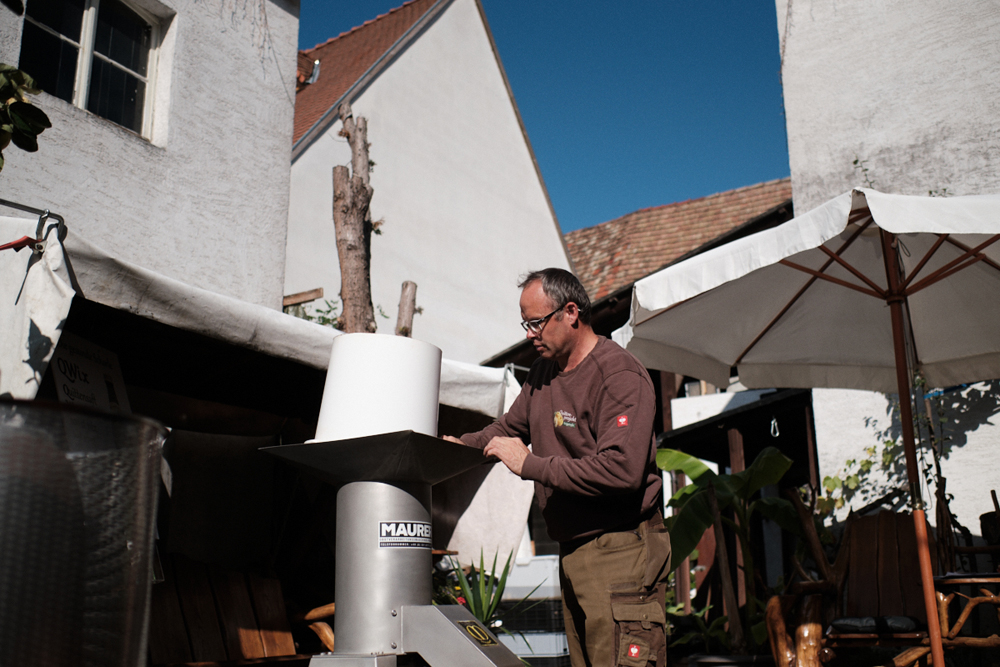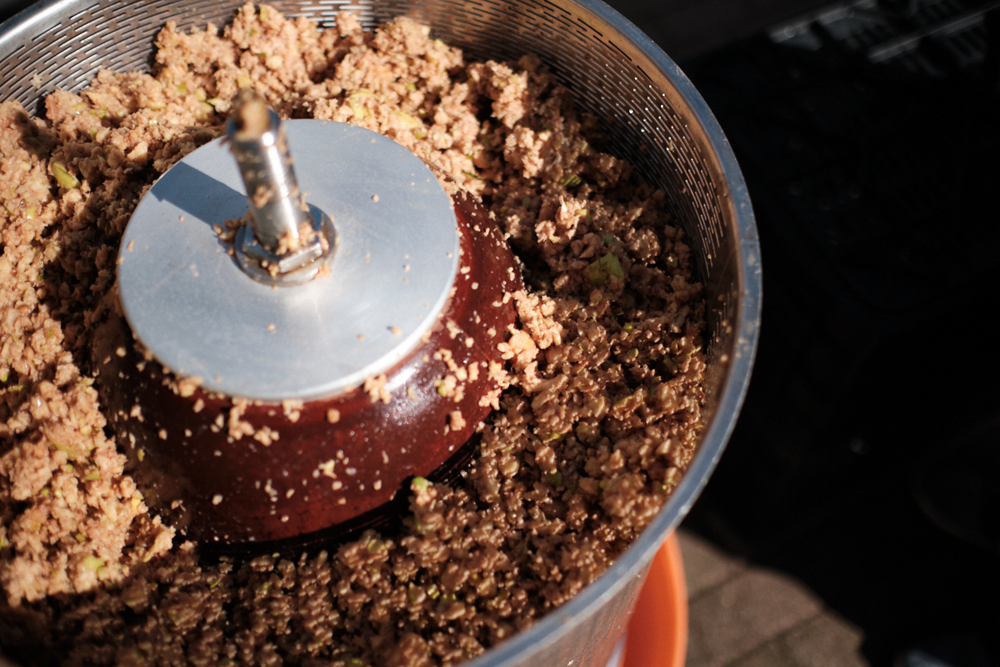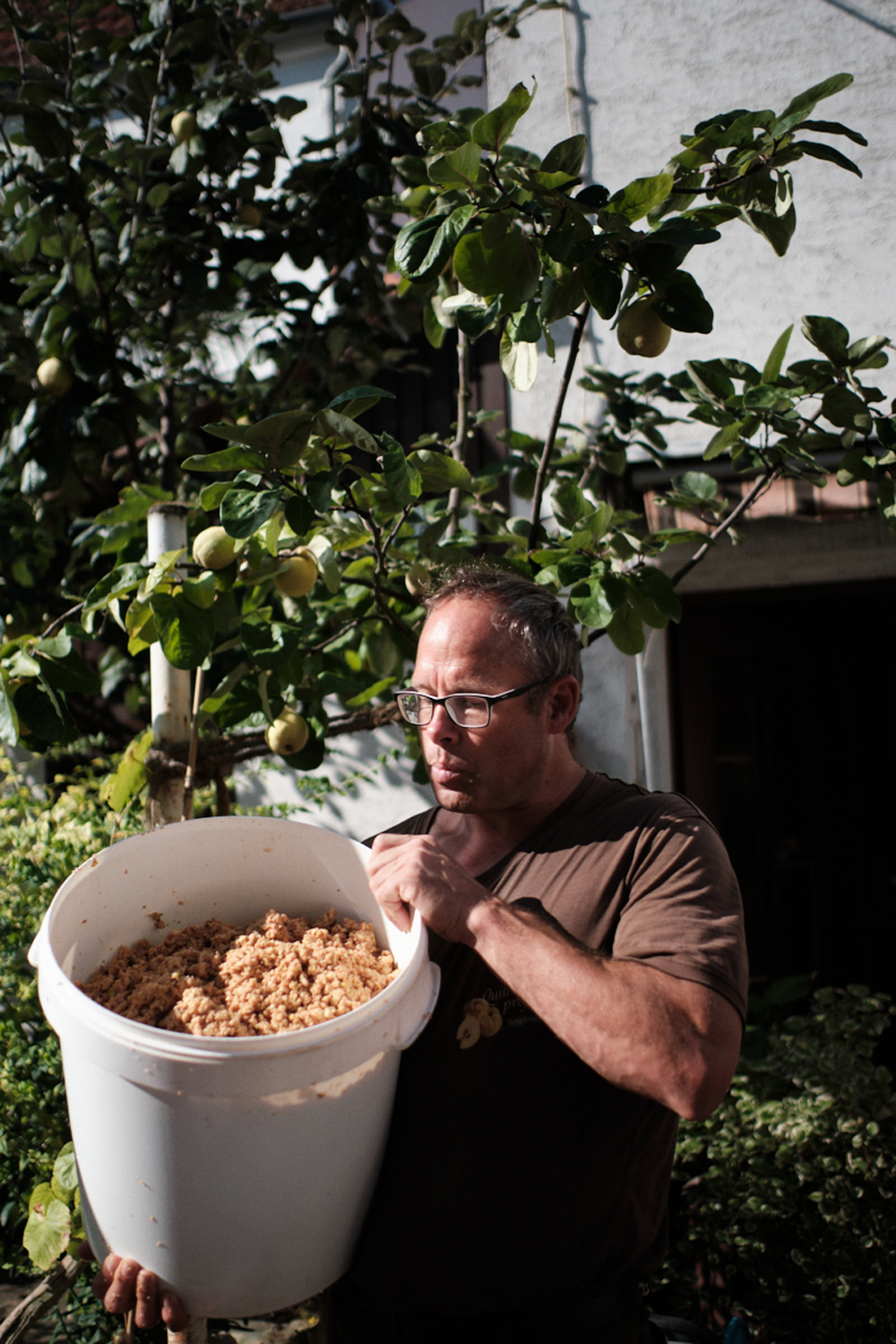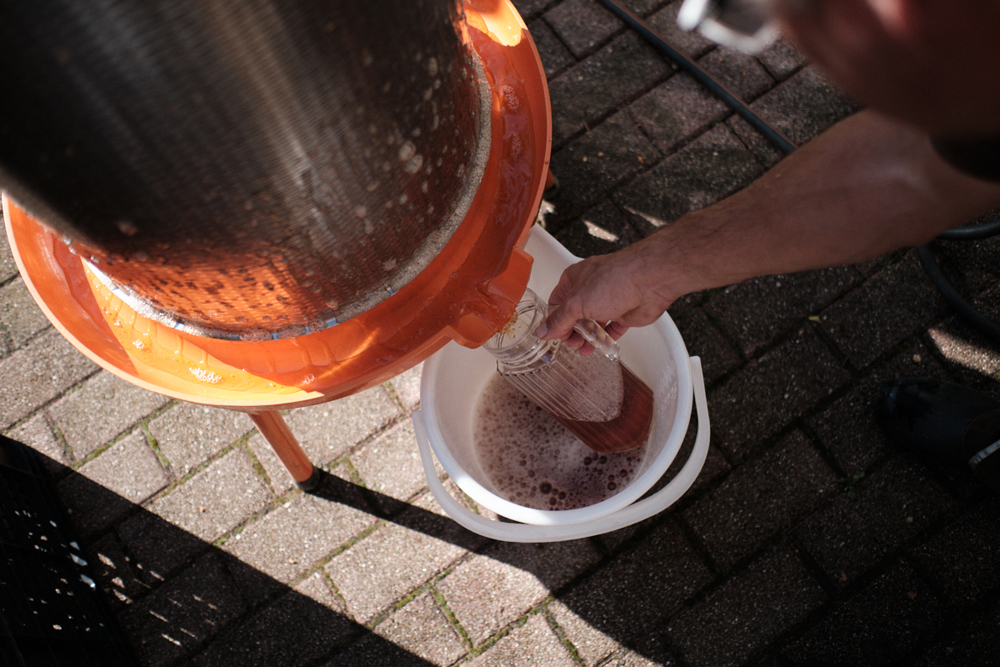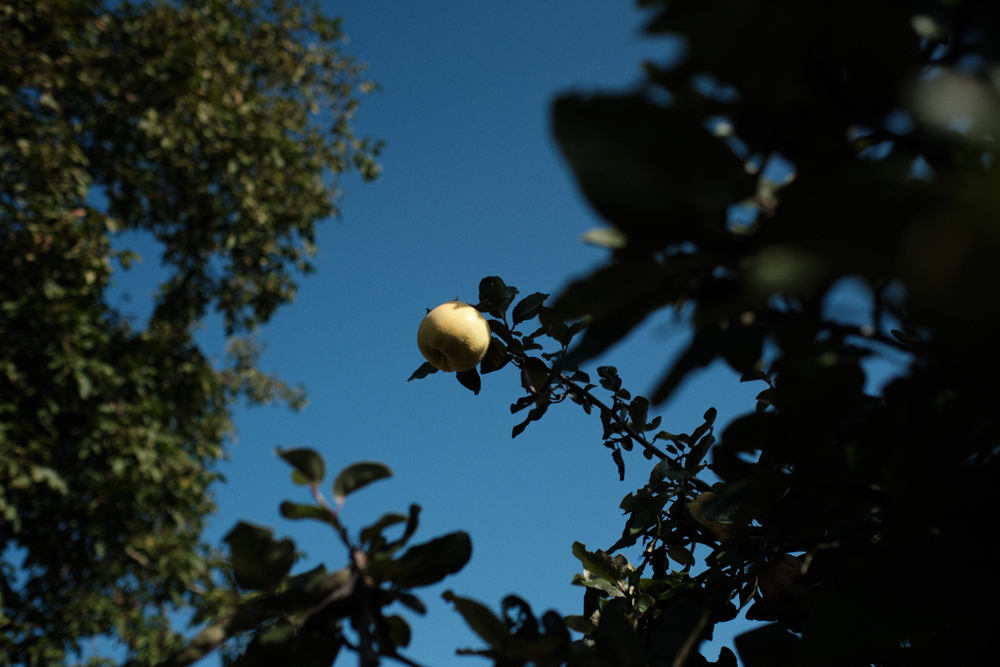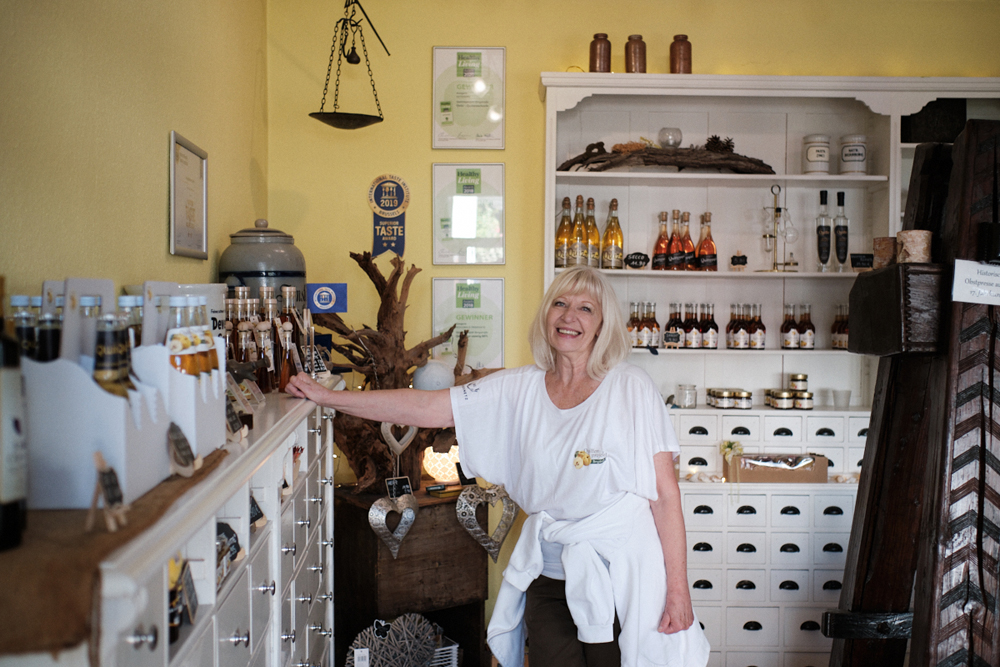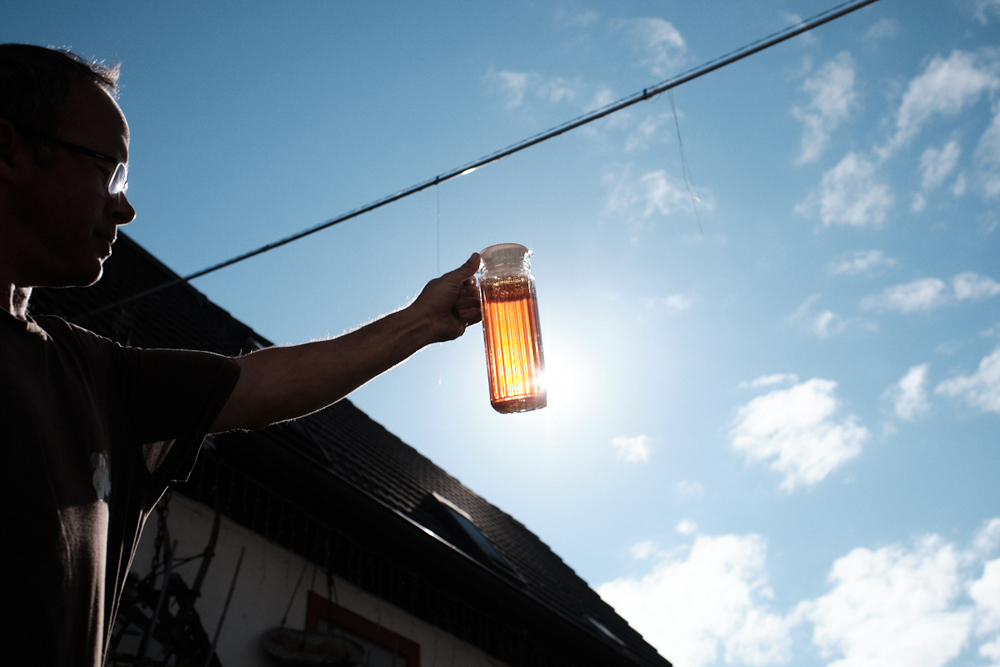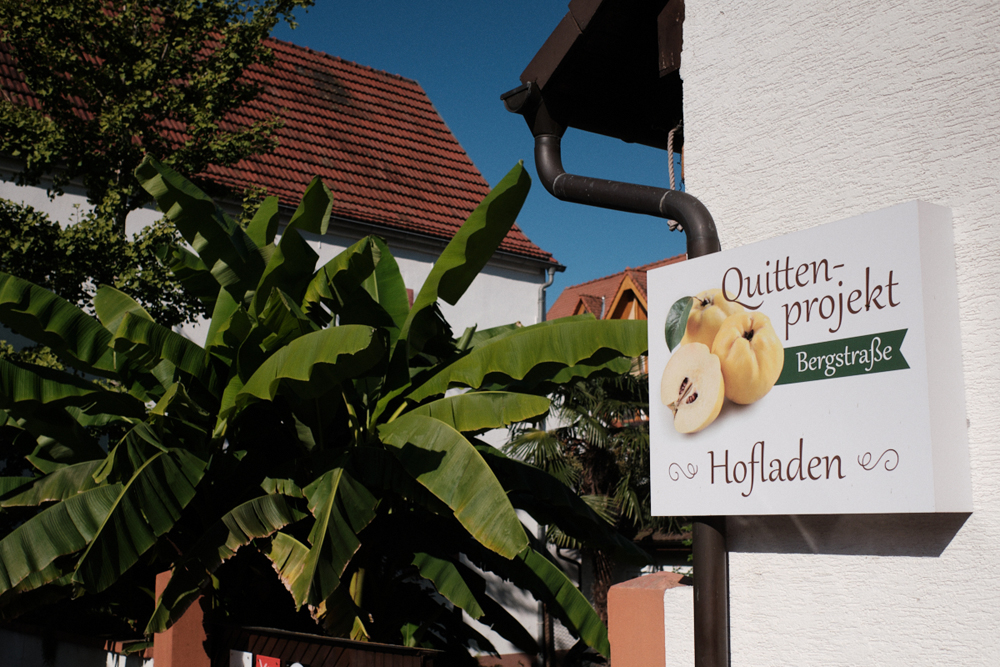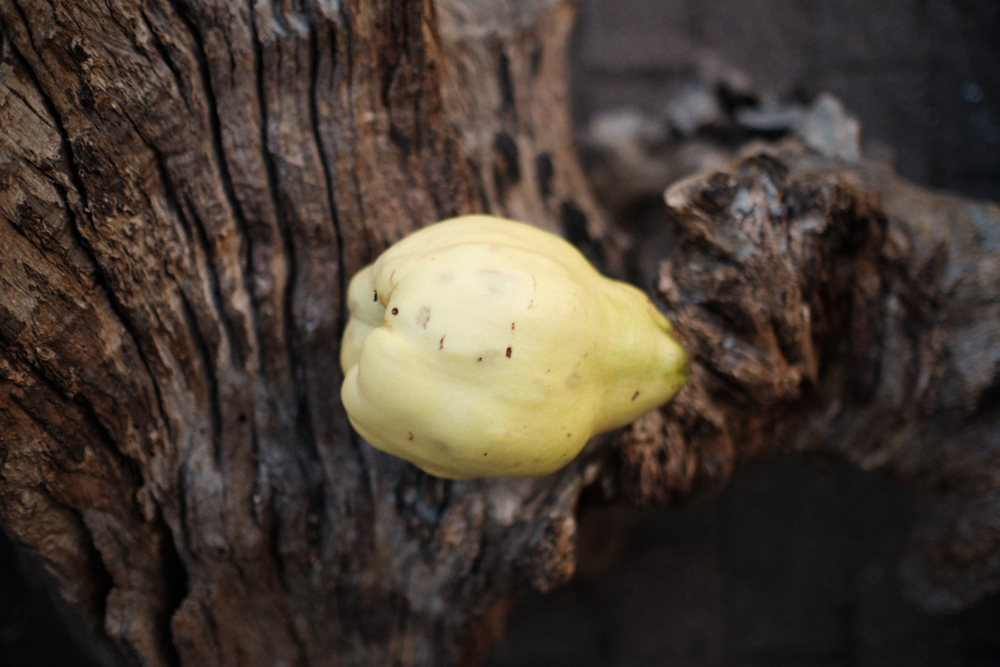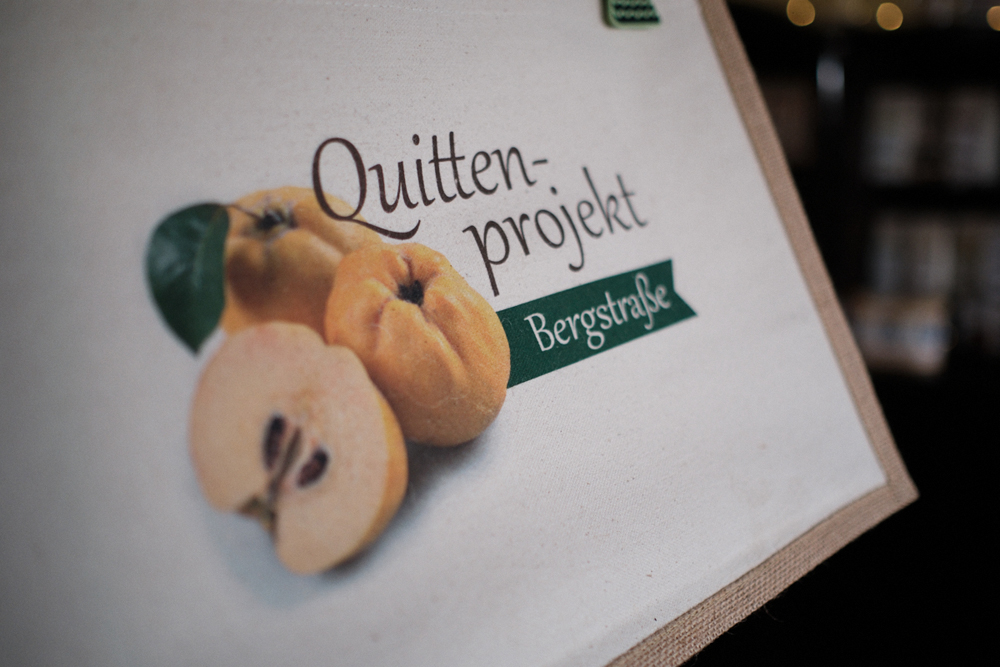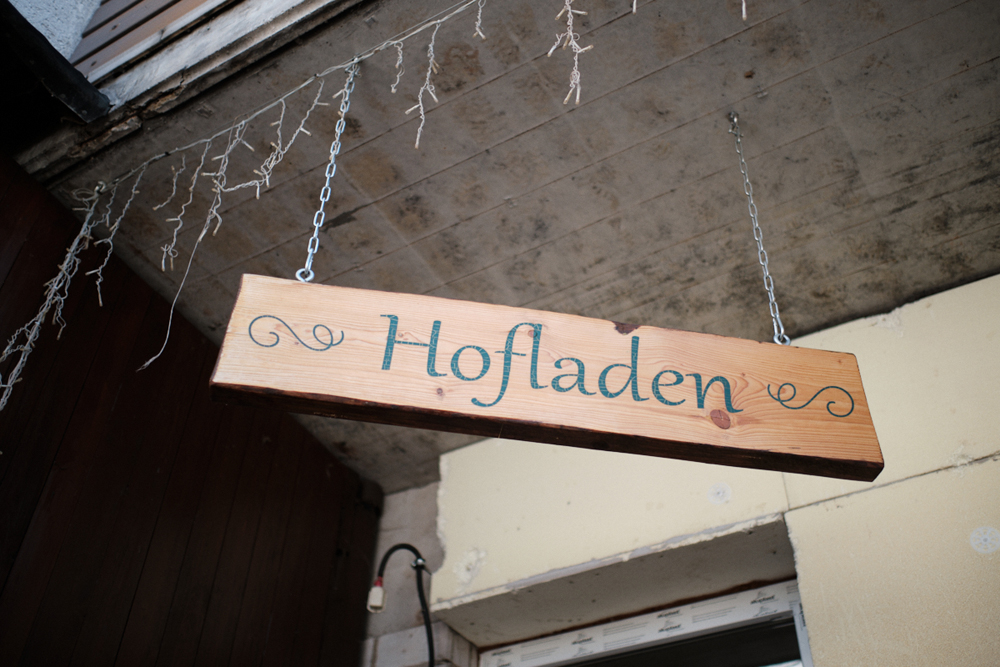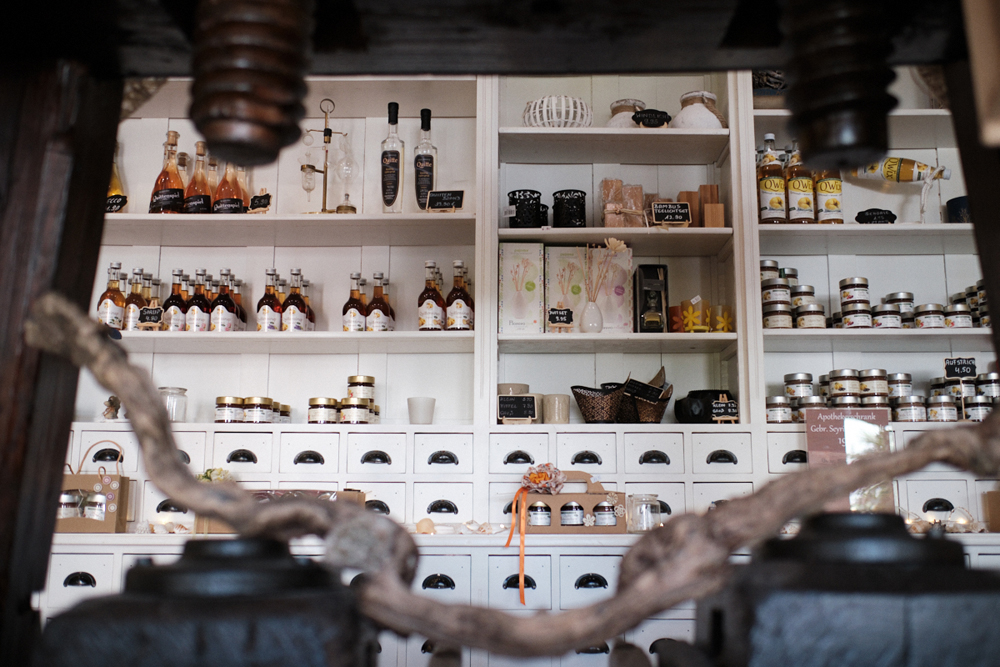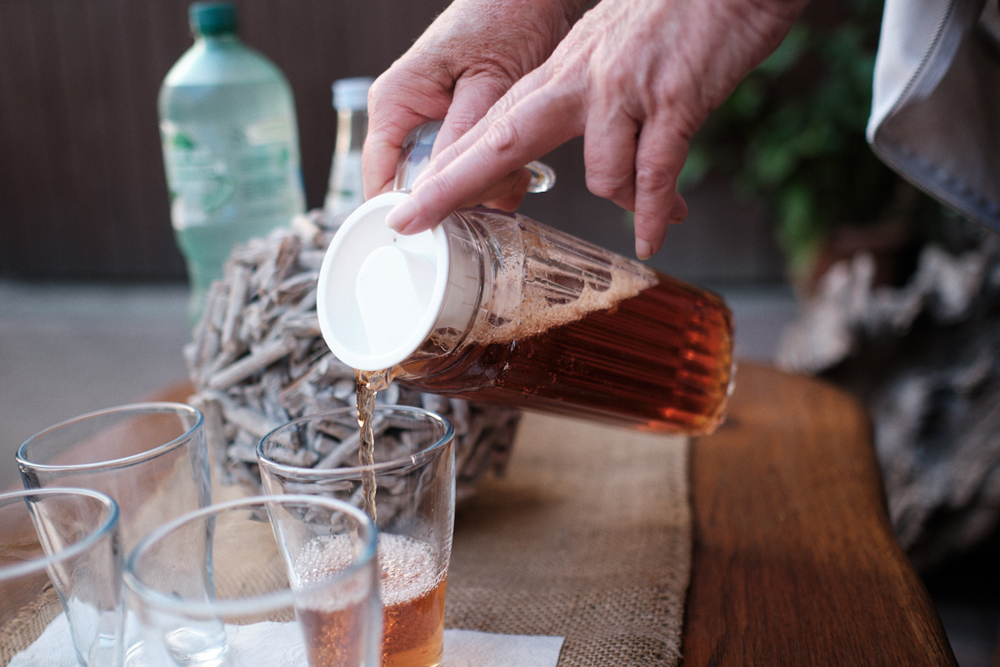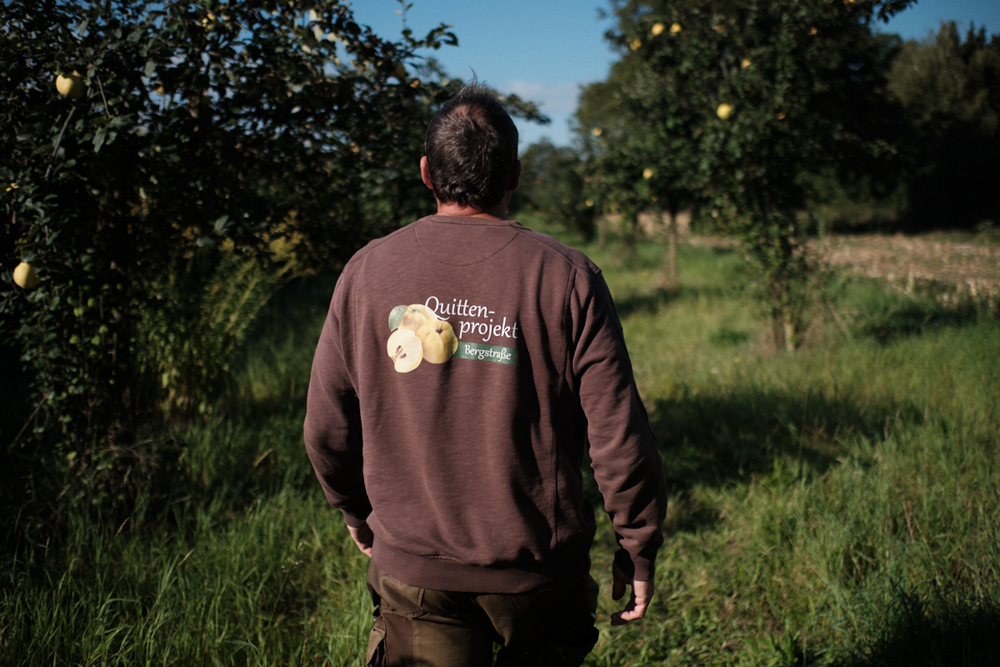October is quince season! However, very few people know what to do with this versatile type of fruit that originates from Iran and the Caucasus. The rock-hard fruit tastes bitter in a raw state, only ever releasing its delectable flavour when preserved, stewed, baked, or when its juice is extracted or processed to make alcoholic beverages. For exactly this reason, Ellen Müller and Rainer Stadler founded their ‘Quittenprojekt’ at Bergstraße road. Their motivation: A greater variety in quince types. And: A huge variety in culinary delight.
On this late summer day, the sun shines as if it was its last chance to perform before the wafts of mist appear. Competing with the sun are these golden-yellow pear-shaped bulbs glittering in the greenery of the treetops: quince. These fruits ripen lushly at a time where the harvest for other fruits has long since passed—it is not for nothing that they are called ‘autumn fruit’ in Germany. Ellen Müller picks a fine specimen from one of the trees on one of Weinheim’s ‘Ökokontoflächen’ (ecological account spaces), of which she and Rainer Stadler assumed ownership in 2011. She rubs the fruit between her hands. It almost looks like she wants to polish the fruit variety that is assigned to Aphrodite, the Greek goddess of love. Using a massage glove, Ellen removes the bitter woolly down, which has served the fruit as a protection against predators and sunburn. “Every single quince passes through my hands,” she says, before the rock-hard raw specimen with a furry coat can bewitch the senses of gourmets. Scrutinizing the golden-yellow ball by rotating it in all directions, Ellen explains how she sometimes harvests extra large specimens, exceeding 1,000 grams: “My record so far: 1.3 kilos.”
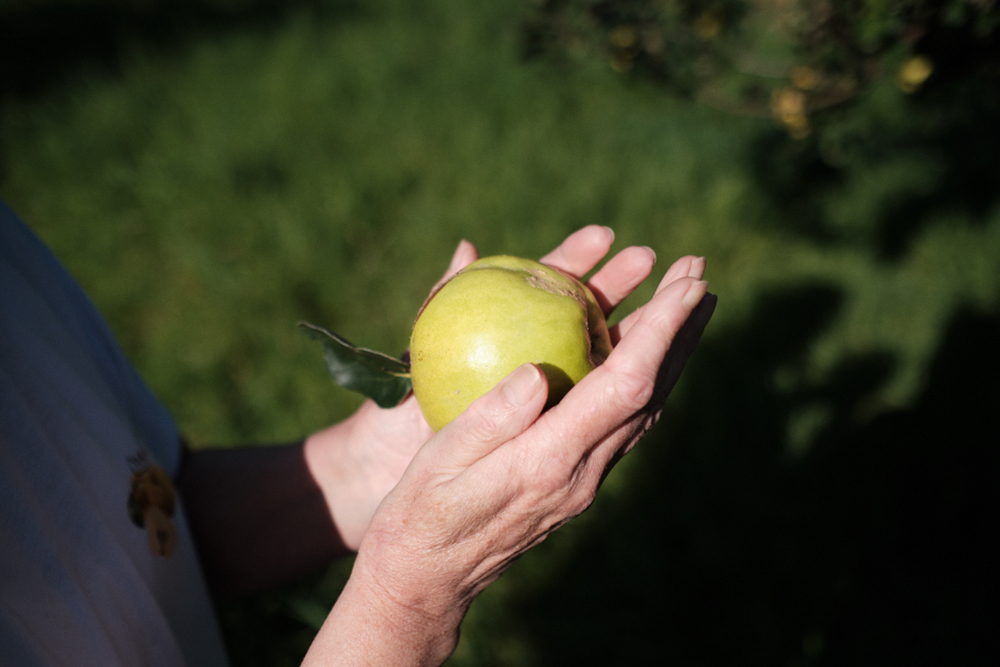
Unlike the related apples or pears, quince release their delicious flavour only when preserved, stewed, baked or when its juice is extracted or processed to make alcoholic beverages. A similar amount of work is required to tend the area around quince trees. According to Rainer, municipalities’ parcels that are deemed ‘ecological account spaces’ can only be mowed from July and must be cleared of the green waste straight away in an effort to protect wildflowers and insects. He points to herbs that sprout finely: “The grass clippings would be detrimental to these shoots.” Rainer and Ellen planted some of their quince trees on areas elsewhere as well: on ecological compensation areas that are subject to less stringent eco-regulations and, in addition, on privately-owned areas, which they lease. The Laudenbach foothills are such an area and make a contribution to the ‘Blühende Badische Bergstraße’ (blossoming Bergstraße region in Baden) project. Similarly, the goal here is to remove green waste from the ground giving way to the formation of rough pastures high in biodiversity.
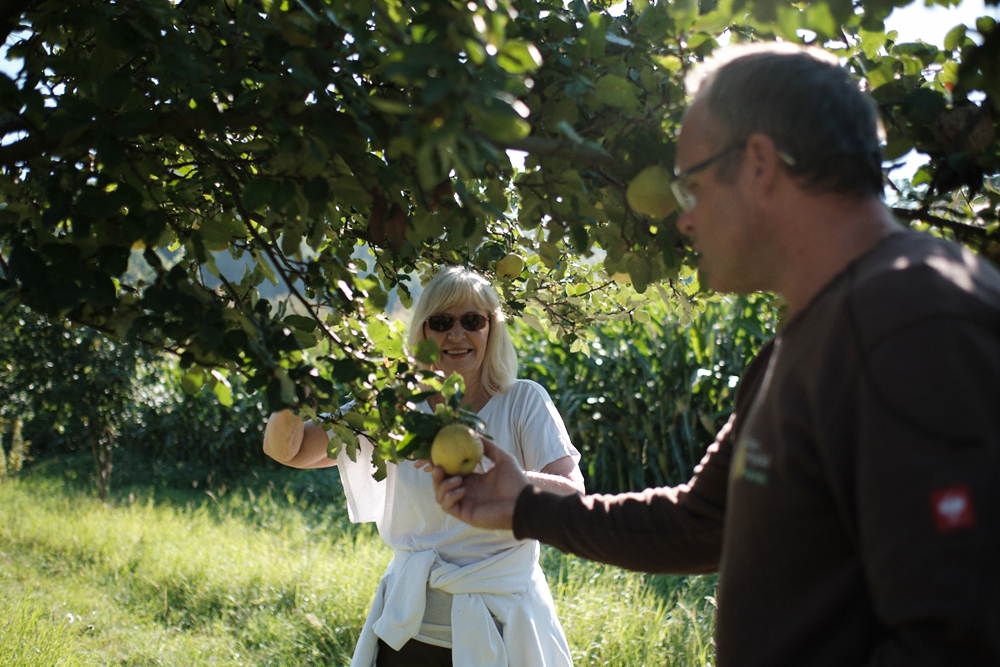
How was it that the native of Sulzbach, who is an industrial mechanic, and the nurse from Mannheim came up with the ‘Quittenprojekt Bergstraße’ idea? Rainer doesn’t hide the fact that his ‘burnout’ related to his position of head of a merchandise management department played an important role. At his family’s estate, where he started all over again afterwards, the Stadler family had been self-sufficient until the 1960s. Furthermore, there was a book by Monika Schirmer about quinces being an almost forgotten fruit variety that served as an inspiration for the pair. So they decided to wake up the Sleeping-Beauty rose family specimen. But it turned out to be easier said than done, because there were only few tree nurseries that had common varieties ten years ago—Constantinople apple and pear quinces, preferably. “So we began our project in a humble manner in 2009.”
